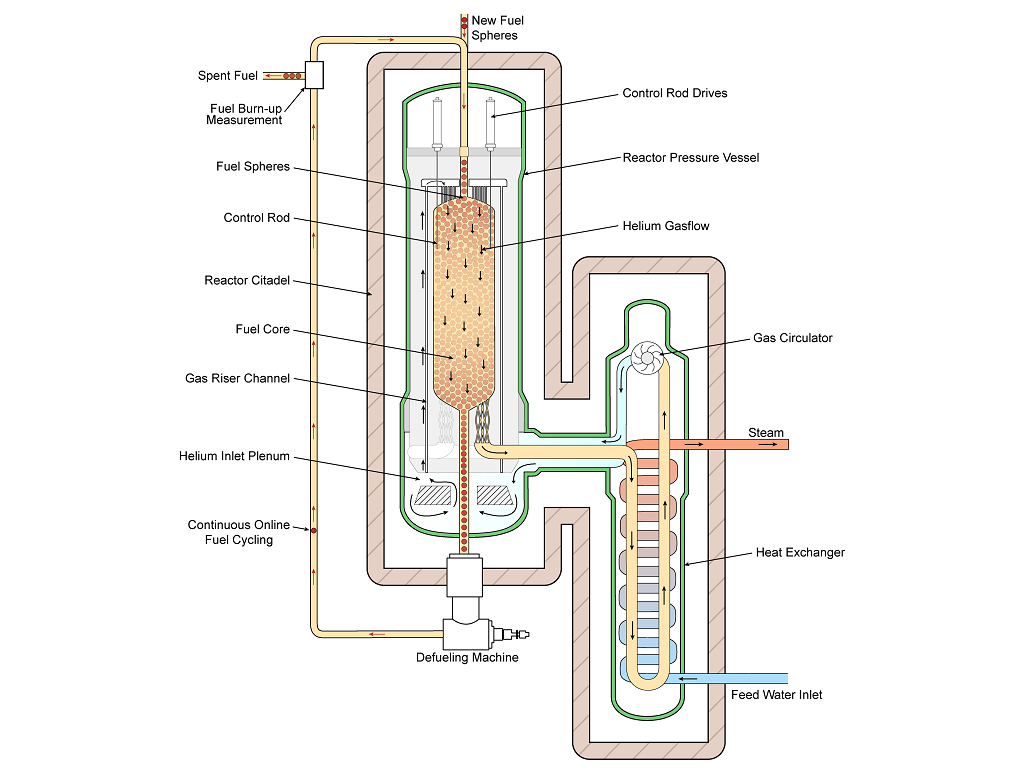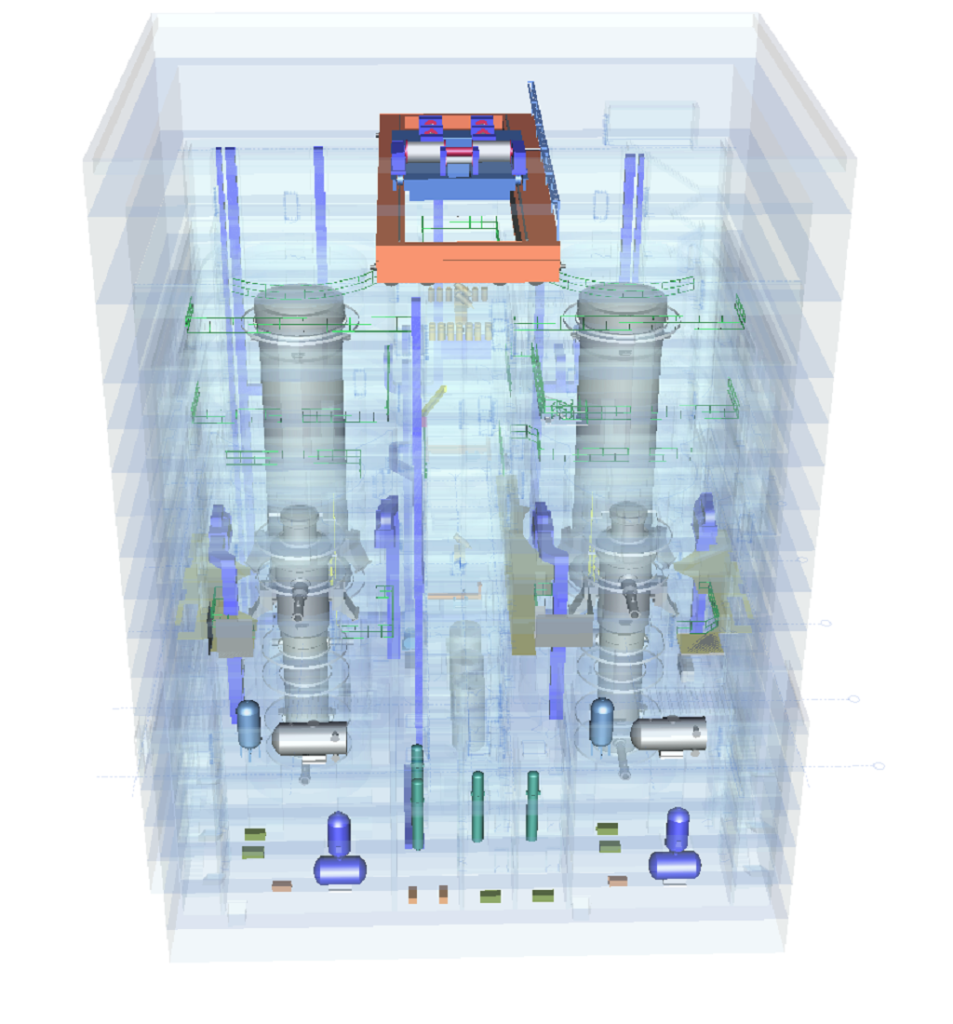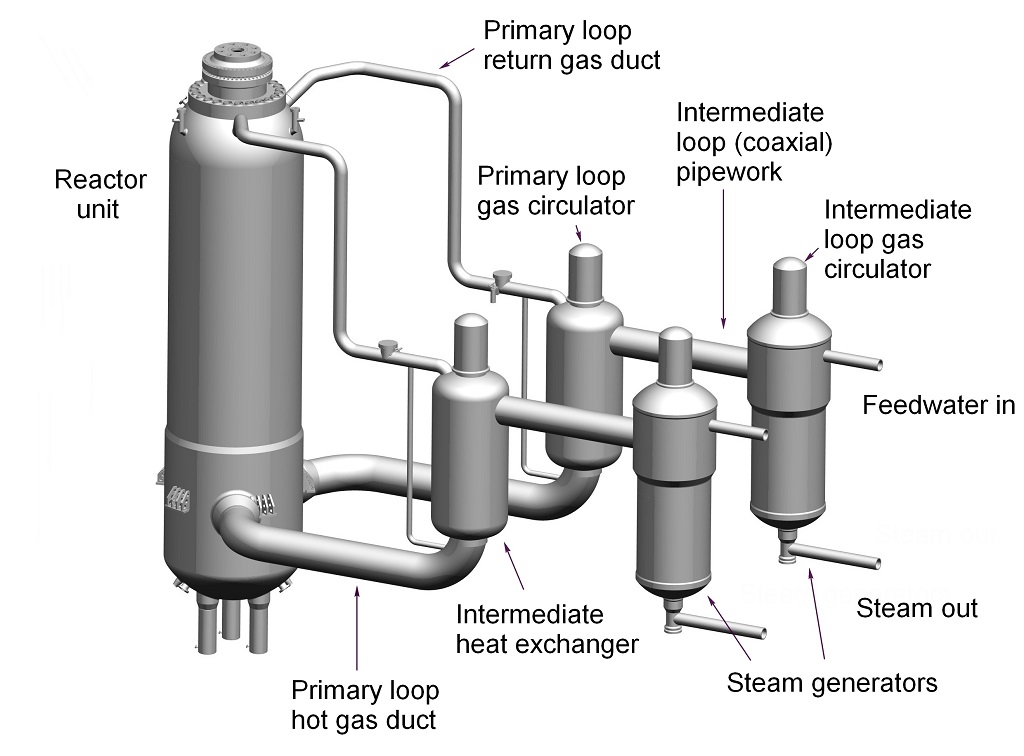Pebble Bed Modular Reactor (Pty) Ltd was established in 1999 with the intention to construct a demonstration power plant at Koeberg near Cape Town, South Africa, and a pilot fuel plan at Pelindaba near Pretoria, after which the reactors were going to be commercialised for the local and export market.
Although it wasn’t the only gas-cooled high-temperature reactor developed at the time, the South African project was internationally regarded as the leader in the global power generation field. In addition to the core team of some seven hundred people at the PBMR head-office in Centurion near Pretoria, more than a thousand people at universities, private companies and research institutes were involved with the project.
A large number of domestic and international subcontractors also became involved in the project, which developed a massive supporting infrastructure. Principal PBMR facilities included:
• the headquarters in Centurion;
• the Pebble Bed Micro Model at the Potchefstroom Campus of North-West University to test gas turbine principles (disassembled after the project closure);
• a High Pressure Test Unit and High-Temperature Test Unit, which were part of the Heat Transfer Test Facility at the Potchefstroom Campus;
• the Helium Test Facility at Pelindaba; a high temperature, high pressure rig designed to test key systems before going to site; and
• a prototype fuel fabrication plant, including kernel production, coated particle production, fuel sphere production and quality control.
After the government pulled the plug on the PBMR, the company was put in a state of care and maintenance, where it still remains. According to the acting CEO, Eskom’s Frikkie Ellis, PBMR’s intellectual property, including all its designs, specifications and reactor engineering calculations, have been preserved. The company retains ownership of nearly 300 patents.
Ellis points out that the PBMR’s large Helium Test Facility at Pelindaba is still operational, while the Fuel Development Laboratory, also at Pelindaba, is still fully equipped. PBMR’s management system, which is ISO 9001 and ASME NQA-1 compliant, has also been preserved.
When the PBMR project was placed in care and maintenance, manufacturing was underway of the reactor pressure vessel, the core barrel assembly and reactor graphite internals for a demonstration 400 MWt/165MWe plant. A smaller 200 MWe model – an indirect cycle design – of the PBMR was also in the concept design phase.
In the wake of the project closure, the components for the massive reactor pressure vessel, which were manufactured by ENSA in Spain, were shipped to Saldanha Bay. Since the Non-proliferation Treaty (NPT) forbids that such items are kept if no end-user is identified, the pressure vessel components were cut to pieces and destroyed under the watchful eye of the NPT officials to ensure that they were not used for any nuclear purposes.
Ellis says given the products created and preserved, PBMR remains capable of re-starting within a relatively short period of time, or alternatively its technology being taken over by a third party in its configured state and utilised elsewhere.
PBMR features
The PBMR is characterised by inherently safe features, which mean that no human error or equipment failure can cause an accident that would harm the public.
Heat from a PBMR can be used for a variety of industrial process applications, including process steam for cogeneration applications, in-situ oil sands recovery, ethanol applications, refinery and petrochemical applications. The high temperature can also be applied to reform methane to produce syngas (where the syngas can be used as feedstock to produce hydrogen, ammonia and methanol); and to produce hydrogen and oxygen by decomposing water thermochemically.
Main components and processes
The reactor has a vertical steel reactor pressure vessel which contains and supports a metallic core barrel, which in turn supports the cylindrical pebble fuel core. This cylindrical fuel core is surrounded on the side by an outer graphite reflector and on top and bottom by graphite structures which provide similar upper and lower neutron reflection functions. Vertical borings in the side reflector are provided for the reactivity control elements. Two diverse reactivity control systems are provided for shutting the reactor down.
Fuel particles and spheres
The PBMR uses particles of enriched uranium dioxide coated with silicon carbide and pyrolytic carbon. The particles are encased in graphite to form a fuel sphere or pebble about the size of a billiard ball. The core of the reactor contains approximately 360 000 of these fuel spheres.
Coolant
Helium, which is used as the coolant, transfers the energy absorbed in the core to a secondary loop through a special heat exchanger called a steam generator. The helium in the primary circuit is circulated by a blower.
Steam generator
The secondary side of the steam generator contains water. The heat absorbed, changes the water to steam which, in turn, is used to drive a steam turbine connected to a generator to produce electricity in the same way conventional power stations operate. In this configuration, the reactor is an electricity producing plant.
The secondary side of the steam generator may also be directly coupled to a process plant to provide the energy as process heat. In this configuration, the reactor is a pure process heat producing plant. Another possibility is to configure the PBMR into a cogeneration plant, i.e. one that produces both electricity and process heat.
Modular design
The design is such that modules can be combined to suit the specific energy requirements of the user. A noteworthy feature of the design is that the reactor, steam generator and spent fuel storage will be housed in a building called the nuclear island, while all the plant connected to the secondary side of the steam generator will be housed in a building (or buildings) called the conventional island.
On-line refuelling
Online refuelling is a key feature of the PBMR. Fresh fuel elements are added to the top of the reactor while used fuel is removed at the bottom while the reactor is at power. The reactor can therefore operate uninterrupted for six years before it needs to be shut down for scheduled maintenance.
Shutdown is done by inserting the control rods. Start-up is effected by making the reactor critical, then using nuclear heat-up of the core and circulating the coolant by motoring the turbo-generator set. Heat is then removed by the pre-cooler and intercooler. At a specified temperature, the cycle becomes self sustaining.

A graphic illustration of PBMR’s demonstration power plant (DPP).






1 Comment
“pebble bed reactor could be ready for the market in about seven years’ time”… Sure it ‘could be’. Anything is possible I guess. It could also be an economic failure, just like PBMR (Pty) Ltd was, and produce nothing but a bunch of ever changing designs.